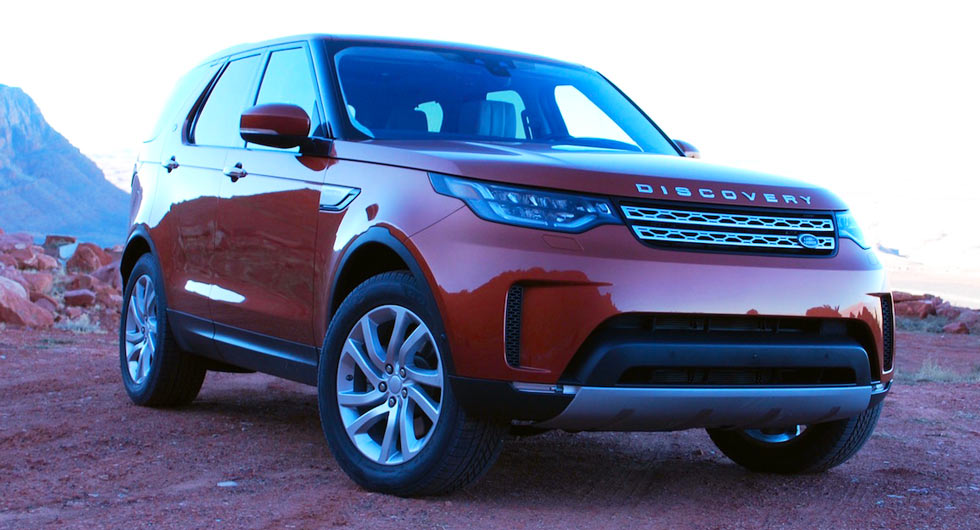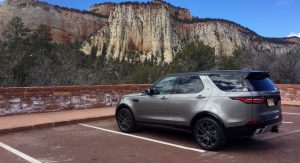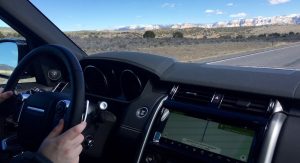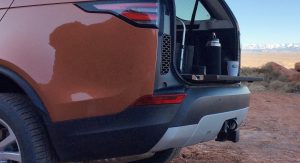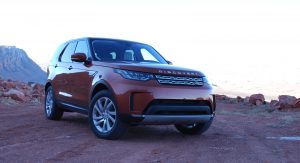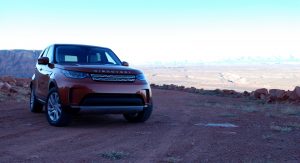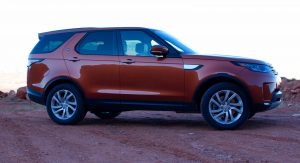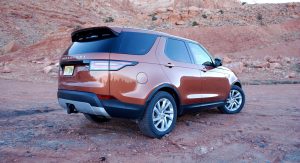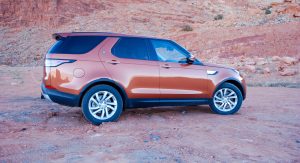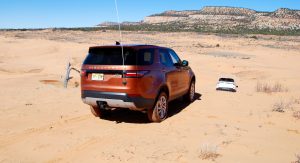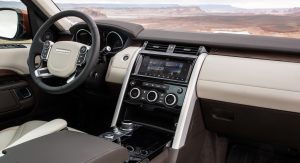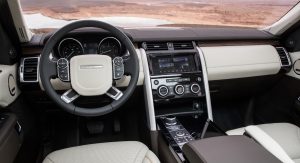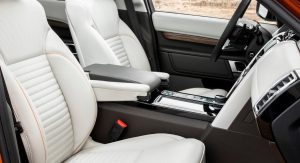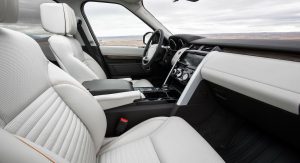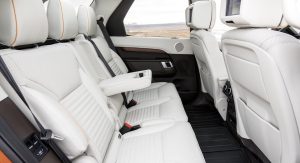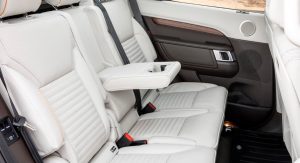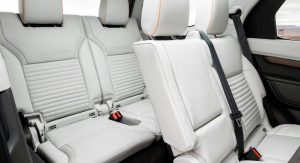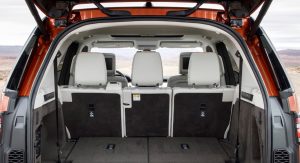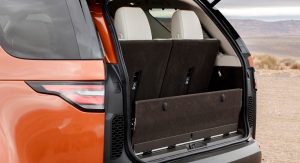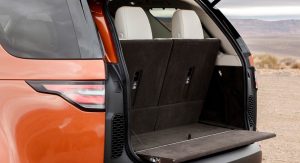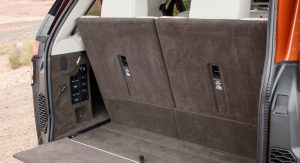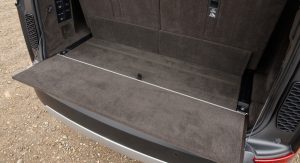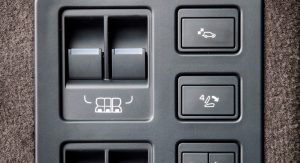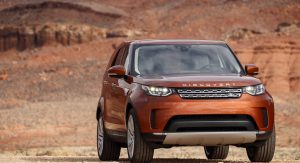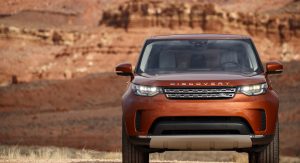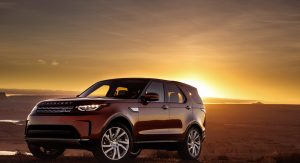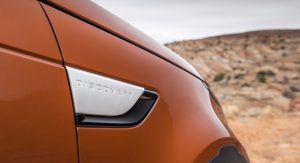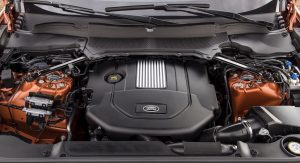The Land Rover arm of Jaguar Land Rover has been cranking out so many things badged “Range Rover” that a formal name change of the company wouldn’t have shocked anyone.
It briefly puts into question the significance of the 2017 Land Rover Discovery. After all, it’s the fifth iteration of a model that made Land Rover relevant to a number of mainstream buyers and helped popularize the SUV as an everyday vehicle back in the early 1990s.
And the Discovery (later LR3 and LR4 in the U.S.) held steadfast to its Land Rover roots, staying square as other SUVs came on the scene with smoother lines and car-derived underbodies.
This time around, Land Rover made itself a new Disco suit to reinvent itself for a modern time.
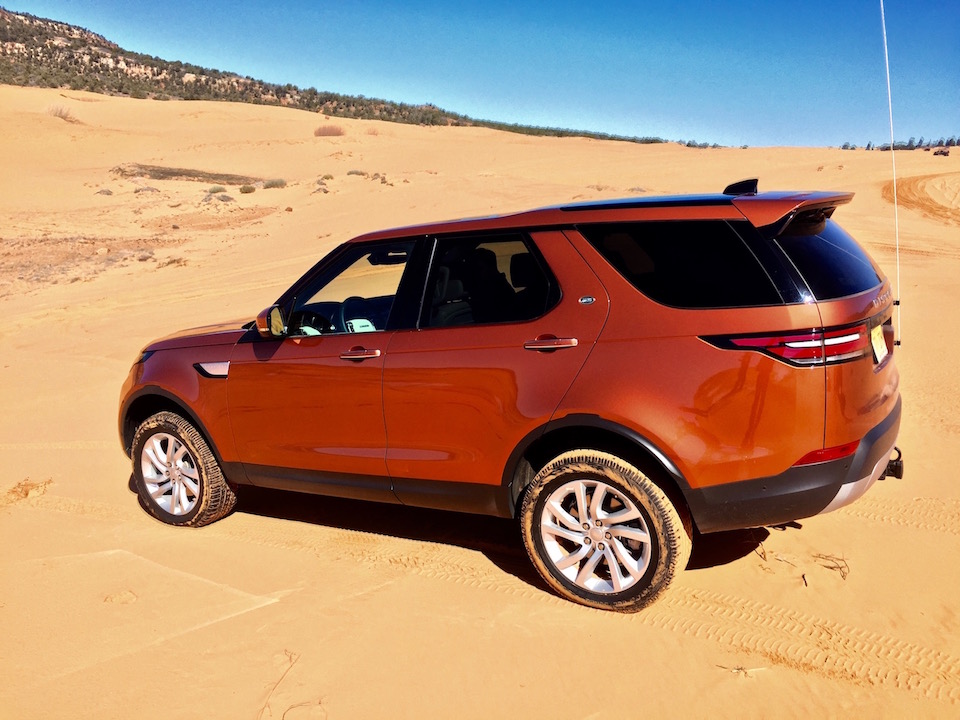
Taming of the square
My main point about the design is that the new Discovery is boxier in person.
That will unlikely lay to rest complaints that it looks too much like a Range Rover Sport and not enough like the last for Discovery models that precede it. I, too, am disappointed so many of the old car’s uprightness has been smoothed out and streamlined, but there’s likely no turning around. There are at least nods to the Discovery models of old, with a subtle step in the roof where the third-row seats live – practical, of course.
Then there’s the offset housing for the license plate that will no doubt frustrate those obsessed with symmetrical rear design. With a longer European plate, I’m sure the effect works. But the stubbier North American design makes the back look even more off-centered and the design is somewhat lost.
Still, it’s a handsome thing as an overall package, partly because the current Land Rover design is decently handsome.
Some of the overwrought details on recent Ranges has also been toned down, to the benefit of cleaning up the look. And it reasonably hides the Discovery’s bulk – it’s three inches longer than the old model, but two inches shorter, much to the relief of those who frequent low parking garages.
Thankfully, there’s a greater color selection than the two choices we had on our drive through Utah – the Namib Orange models which blended right into the rocky scenery, or the Silicon Silver ones with a Dynamic Design Pack (black wheels and trim) that I wasn’t particularly fond of on the last LR4 I drove.
While you may not instantly recognize it as a Discovery now, it’s unmistakable as anything other than something that ends in “Rover.”
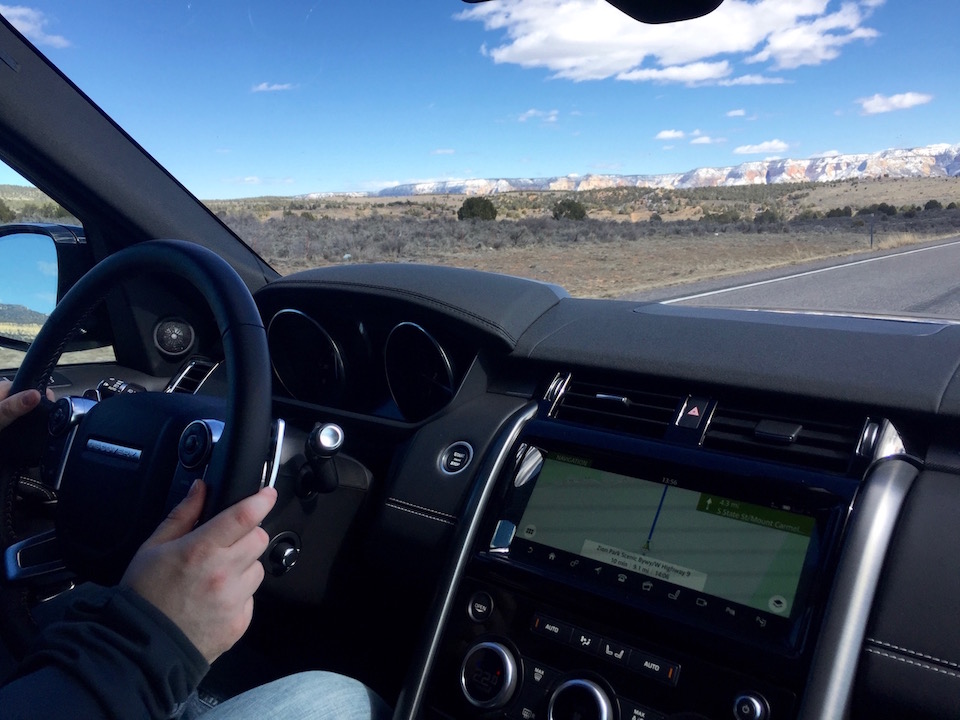
Room to rove
The Discovery’s main claim inside is that it can accommodate up to seven adult-sized humans without too much bending, twisting and pushing of buttons and patience.
Once you figure out the multitude of ways to fold the seats, the Discovery comes across as one of the more accommodating three-row SUVs on the market, up there with the Mercedes-Benz GLS and Volvo XC90. This is where the squareness of the Land Rover is most felt and appreciated. The seats in the rear also feel substantial, a trait carried over from the old car, which was supremely space efficient but getting any adult into the rearmost chairs was an undignified affair.
Children are most likely to get into the rear, however, and they’ll be royally treated. Land Rover saw fit to put a myriad of storage compartments and USB ports back there so there should be nary a murmur from them. But only the outboard second-row seats get a spot in front of the headrest-mounted TV screens, so they’re bound to be the catalyst for some arguments in large families.
It’s a shame Land Rover (and Jaguar, for that matter) still can’t quite nail the details down in all of their products. As improved as the InControl Touch Pro infotainment system is – its tile display for all navigation, audio and other information gives great information at a glance – it’s achingly slow every time you start the car. For every inch of beautifully piped and perforated leather, there’s a bit of plastic trim that sounds hollow when a ring taps it or feels too hard when your knee smacks against it.
But the basics are right. Eccentric controls primarily revolve around the touchscreen and there are nearly enough hard controls to work around it. Plus, you’re gifted with perhaps the best driving position of any SUV around. That throne-like position from the best Land Rovers remains, right down to the individual fold-down armrests that adjusts to nearly every position. It makes you feel tall, even if you already are.
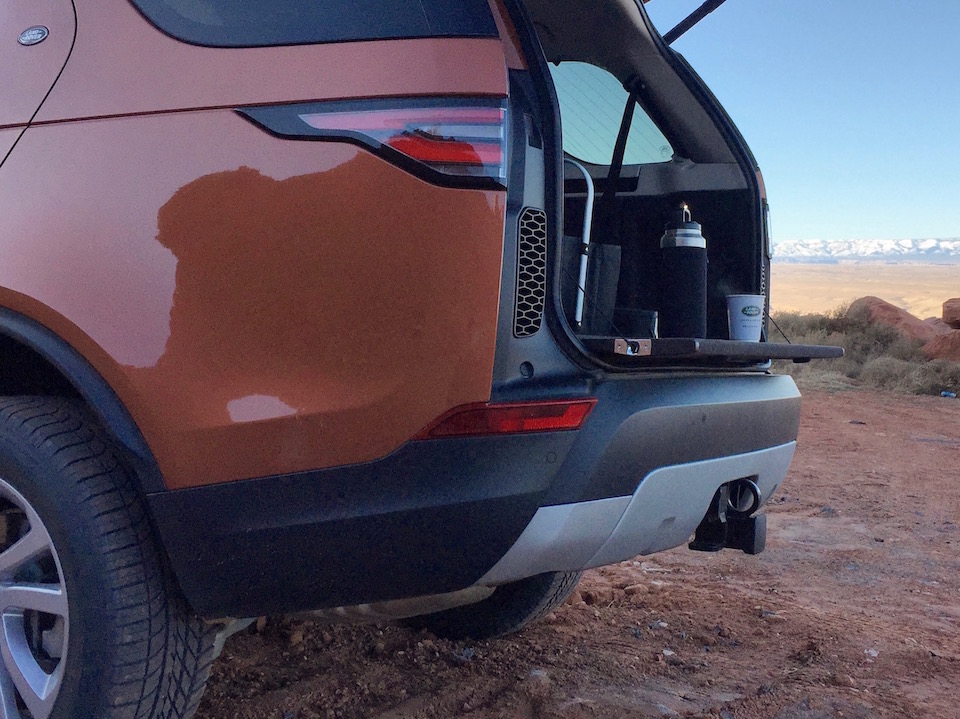
The split tailgate of the Discovery held for the last decade or so is gone, succumbing likely to the insistence of power operation. But Land Rover has tried to compensate with a power-operated platform that serves as both a barricade to stop your groceries from rolling out of the car and a ledge to either sit on or slide your luggage easily in and out. It sounds like a gimmick, but once supplied with a thermos full of coffee on a particularly cold morning in a picturesque part of Arizona, I understood why it exists – and why it’s operated by a button in the cargo area.
Polo, anyone?
Dances the dance
Despite the weight reduction, the Discovery still drives like a big car – a big truck, actually. Responses from the controls are mostly dull, even on pavement. The ride is always soft, sometimes bouncy if you hike up the air suspension. While it’s never unruly, some more road-oriented SUVs do it better – the XC90 and Audi Q7 come immediately to mind.
Our time in and around Utah’s Zion National Park was limited to U.S.-spec 3.0-liter supercharged V6 and turbodiesel V6 models, the latter of which will likely make up the bulk of Discovery sales globally. Other markets are offered with two 2.0-liter four-cylinder engines from the Ingenium family – a 180 PS diesel or the 240 PS turbo that’s already in the Jaguar XE, XF and F-Pace. 0-100 km/h (62 mph) comes at 8.1 seconds for the TdV6 and 7.1 for the supercharged V6, respectable times considering the still-sizable mass of the Disco. It’s still between 2.1 and 2.2 tons, even with the four-cylinder hearts.
Base SEs in the U.S. do not have the option of the diesel, so you’ll need to upgrade to the HSE for that. And it’s well-worth the $2,000 premium, especially if you’re going to use the Discovery as a long-distance cruiser. My time in an LR4 with the 3.0-liter supercharged petrol V6 was a challenge to see if I could make it more than 200 miles between fill-ups, thanks to a tiny fuel tank. Based on the mix of highway and off-road driving we were doing in the Discovery TdV6, 23 mpg combined and at least 400 on a tank seems like a realistic prospect.
Sand, everywhere. #discovery @LandRoverUSA pic.twitter.com/nnBUx3azGK— Zac Estrada (@zacestrada) March 1, 2017
Yet it’s off-road where the TdV6’s torque allows the engine to shine, and the the Discovery as a whole to stand out. Predictably, it’s a capable machine that even an impatient driver would have a hard time getting truly stuck. Perhaps surprisingly, though, is that the updated Terrain Response system is smart even in Auto mode, meaning fewer times the driver has to reconfigure the car to adapt to the driving conditions. But the presets for sand, rocks, etc. were, as always, appreciated.
The test cars were fitted with standard-in-the-U.S. all-season tires and coped with the frozen sand pretty well. Still, imagine what it could do with a more rugged set of tires. The most off-roading most Discoverys will see is a muddy trail to the stables after a storm. Yet it can navigate deep mud and snow and our failing infrastructure better than pretty much every other luxury vehicle.
Which is something to consider if you truly believe coastal California will soon fall into the Pacific Ocean.
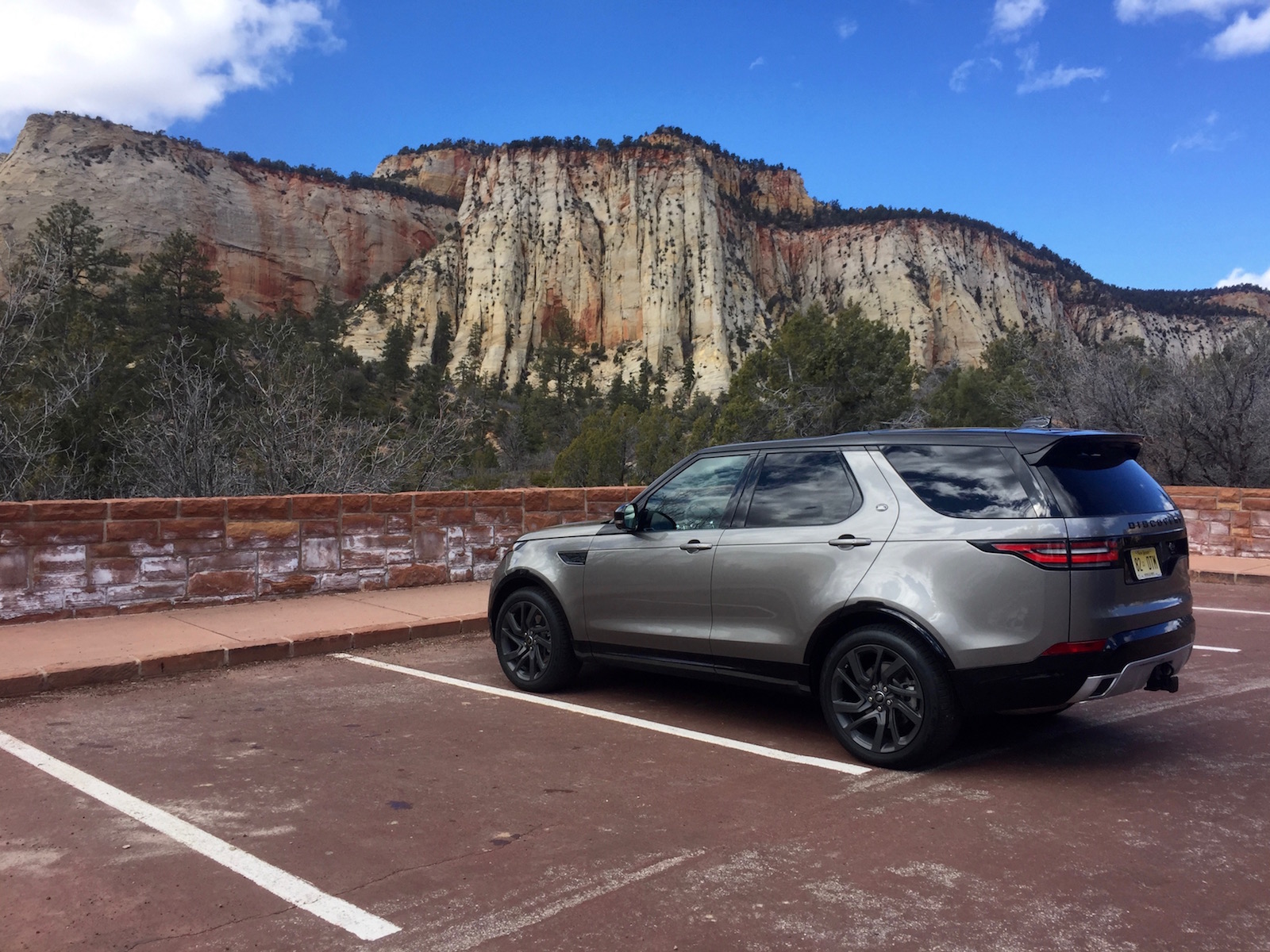
Disco lives
In the States, the base SE Si6 will come in at just below $51,000 to start – with five seats, mind you. Prices will escalate to around $73,000 for a fully loaded HSE Lux with the TdV6, similar to the ones all the journalists drove. Mind you, this isn’t at all out of line with the prices of other luxury SUVs of this size. Consider the Land Rover might be the only one that can compete with an American full-size SUV for hauling capabilities – and pretty much on its own in terms of off-road prowess – and the Discovery could almost be perceived as a bargain. Almost.
New Discoverys start landing appearing in European showrooms around the time you read this, while Land Rover USA’s people say they go on sale in the States so late this May that it’ll practically be June. That will give you enough time to decide whether or not to cancel your Q7 or XC90 order.
The new Discovery pretty much eliminates the quirks of the old model that were enough to set some buyers off in search of something more conventional. It tests the loyalty of those who loved old Discos because of their quirks, but should win them over because of how much more usable this new model is.
Photos: Land Rover, Zac Estrada/Carscoops



